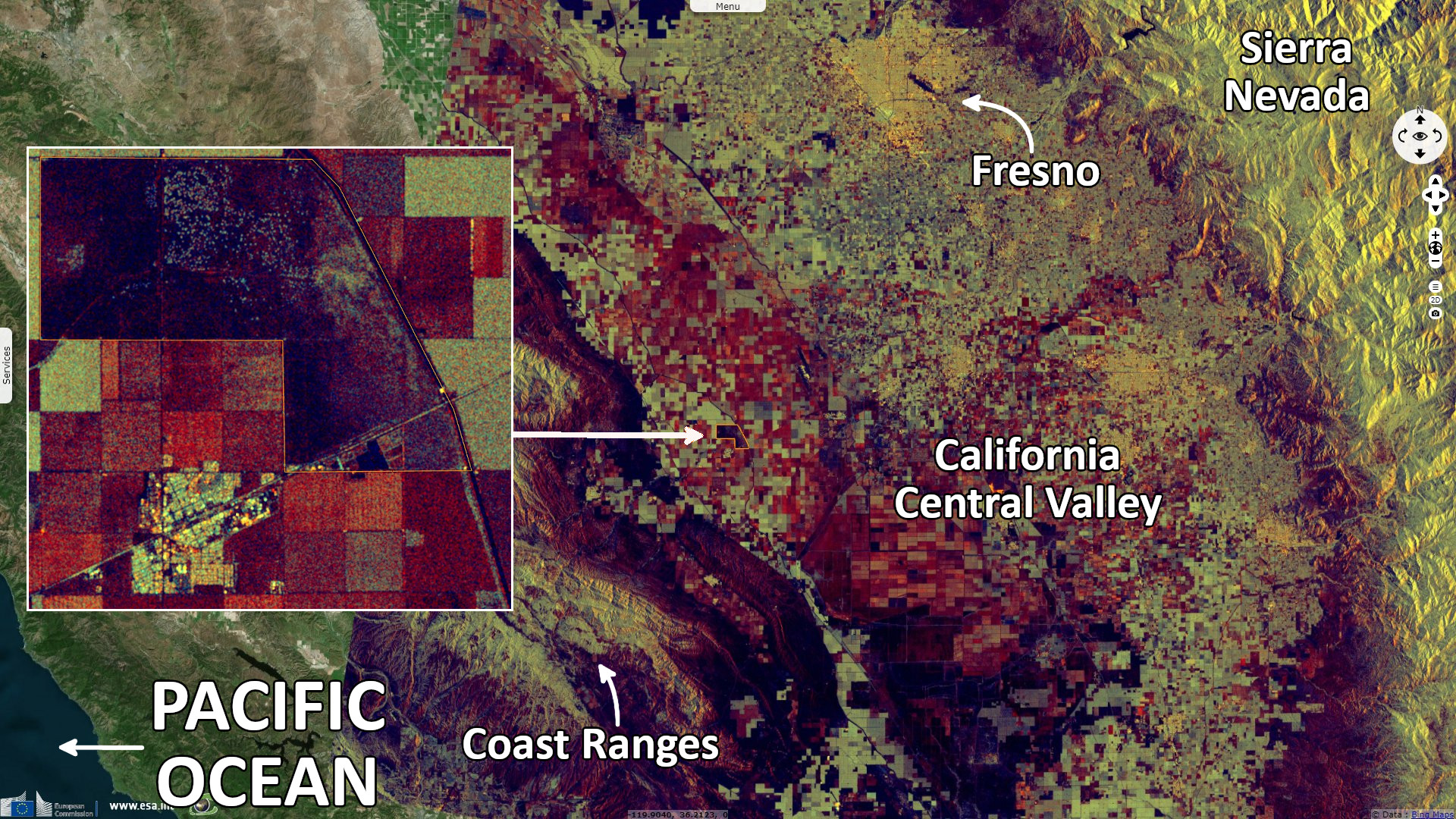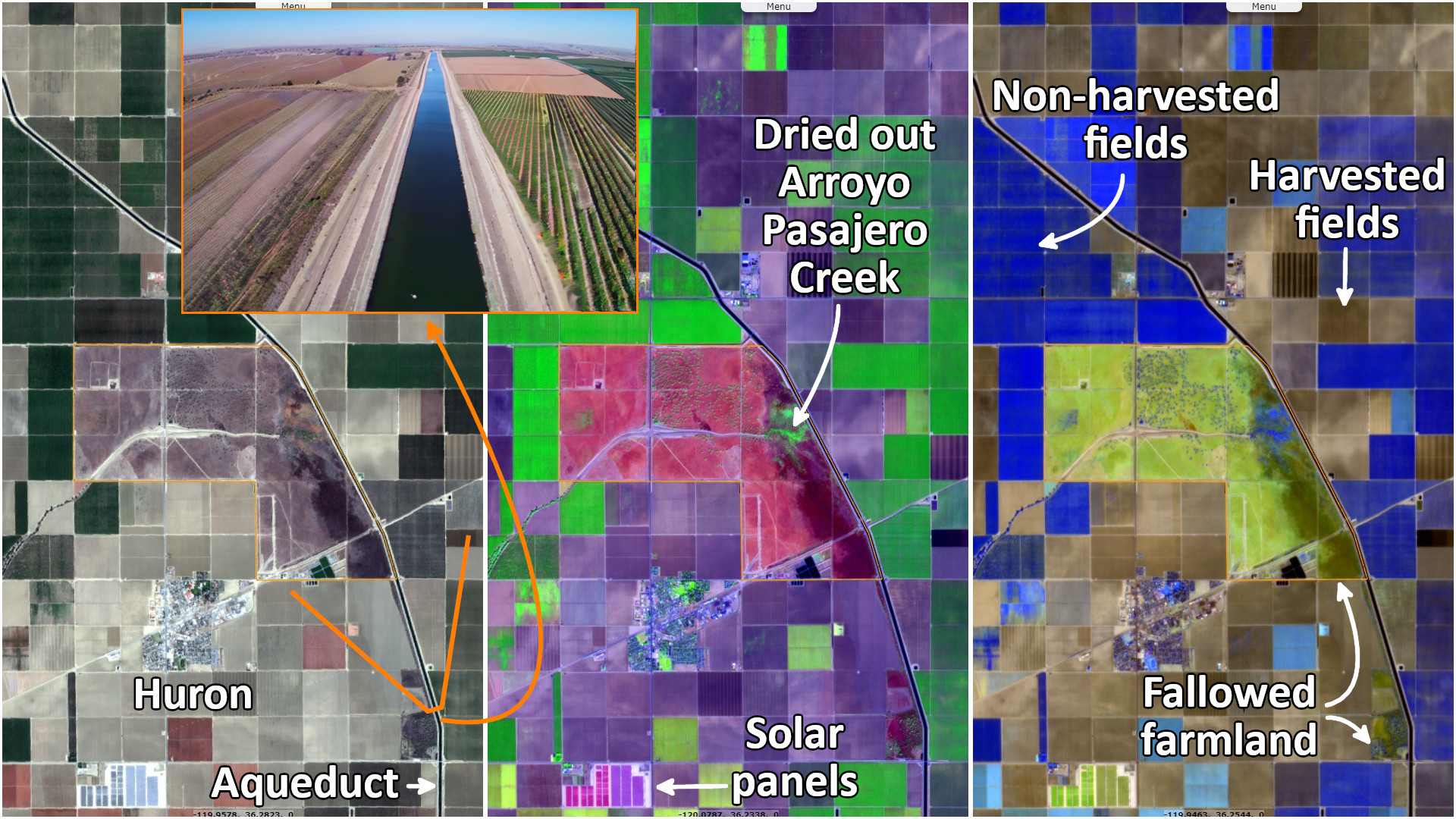California projects to use storm water to recharge aquifers, USA
Sentinel-1 CSAR IW acquired on 21 October 2022 at 14:00:23 UTC
Sentinel-2 MSI acquired on 23 October 2022 at 18:44:29 UTC
Sentinel-1 CSAR IW acquired on 02 November 2022 at 14:00:23 UTC
Sentinel-1 CSAR IW acquired on 14 November 2022 at 14:00:23 UTC
Sentinel-2 MSI acquired on 23 October 2022 at 18:44:29 UTC
Sentinel-1 CSAR IW acquired on 02 November 2022 at 14:00:23 UTC
Sentinel-1 CSAR IW acquired on 14 November 2022 at 14:00:23 UTC
Keyword(s): Land, climate change, drought, irrigation, agriculture, infrastructure, cyclone, hurricane, drainage, hydrology, flood, risk prevention, Unites States
A number of Californian residents ran out of potable water during the state's last big drought, which lasted from 2012 through 2016. The Californian irrigation system relied on damming and diverting rivers, and flooding canyons, damaging their ecosystems. Some areas have become too dry to farm some years and dangerously flooded in others.
About 340 recharge systems have been proposed by water agencies in California. They will turn unused fields into large ponds to hold water so that it can percolate into the porous rock and earth below, creating or restoring an aquifer rather than rushing to the sea. Recharge systems will help to guide water underground to store it for residents as well as agriculture. Capturing runoff will also help protect the city from catastrophic floods and make water more affordable.




